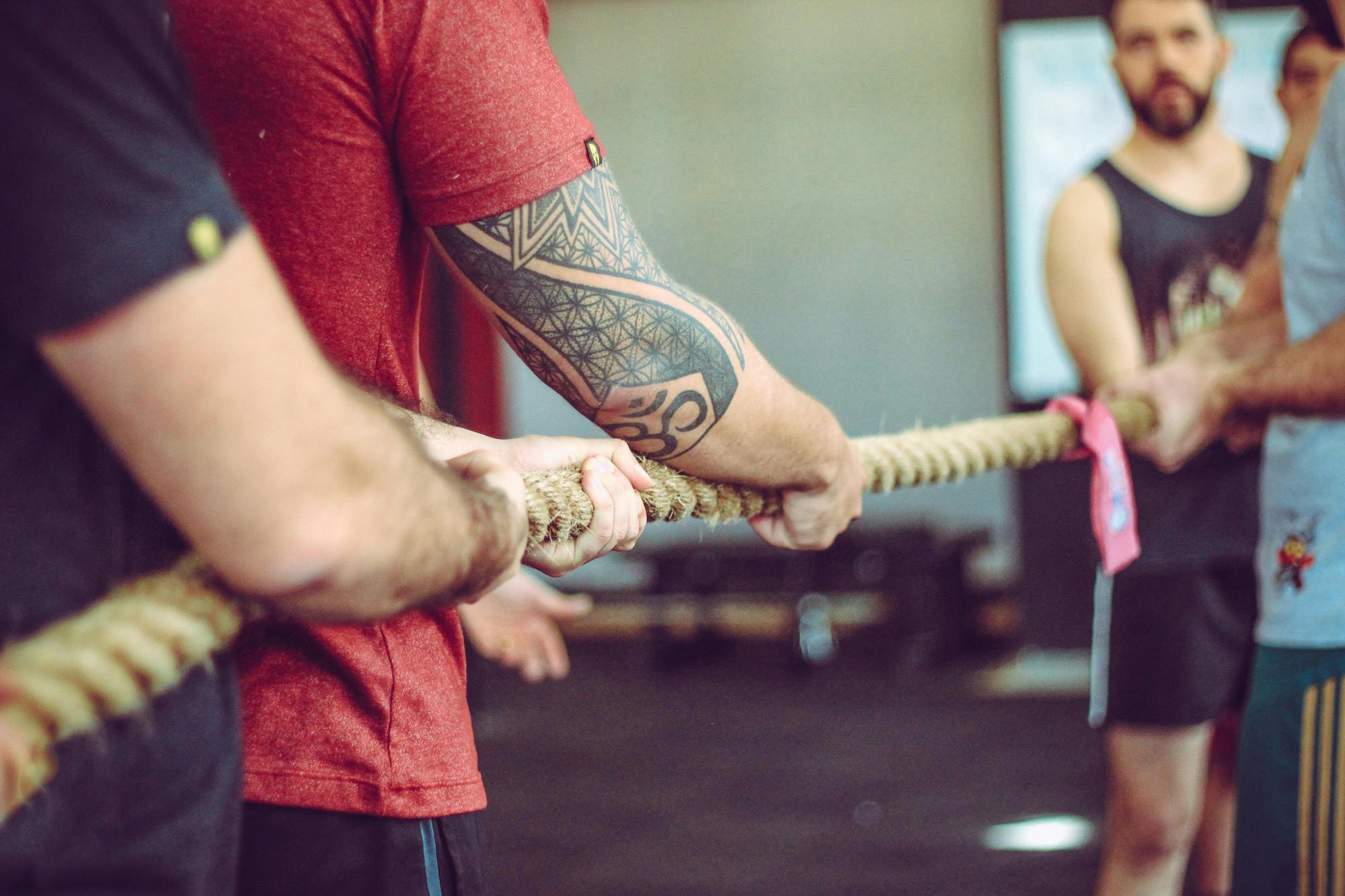Tug-of-War: The Underappreciated Sport of Power and Strategy
Brute strength meets tactical finesse in the often overlooked sport of tug-of-war. This ancient contest, pitting teams against each other in a battle of raw power and technique, has a rich history and surprising depth. From its roots in ancient civilizations to its modern competitive form, tug-of-war offers a unique blend of physical prowess and team dynamics that deserves a closer look.

The Ancient Roots of Tug-of-War
Tug-of-war’s origins can be traced back thousands of years, with evidence of similar contests found in ancient civilizations across the globe. In ancient Egypt, pharaohs were depicted engaging in a form of rope pulling as a test of strength and divine favor. Similarly, ancient Chinese texts mention rope-pulling contests as part of military training and cultural festivities.
In Norse mythology, the god Thor engaged in a tug-of-war with the Midgard Serpent, symbolizing the eternal struggle between gods and cosmic forces. This mythological connection highlights the sport’s symbolic power as a representation of opposing forces in balance.
The sport also held significance in many Asian cultures. In Korea, a traditional folk game called “juldarigi” involved entire villages competing in massive tug-of-war events, often as part of harvest festivals. These events were not only tests of strength but also served as community-building exercises and rituals to ensure good fortune.
As civilizations developed, tug-of-war evolved from its ritualistic and military origins into a popular pastime and competitive sport. By the 19th century, it had become a common feature in athletic competitions and festivals across Europe and North America.
The Golden Age of Olympic Tug-of-War
Perhaps the most prestigious chapter in tug-of-war’s history was its inclusion as an Olympic sport from 1900 to 1920. During this period, tug-of-war was recognized at the highest level of international athletic competition, showcasing the sport’s legitimacy and global appeal.
The first Olympic tug-of-war event took place at the 1900 Paris Games, where a mixed team representing France and Denmark emerged victorious. In subsequent Olympics, the sport saw fierce competition among nations, with Great Britain dominating the medal table, winning two gold medals and one silver across the five Games in which tug-of-war featured.
The 1908 London Olympics marked a high point for the sport, with eight teams competing in a hotly contested tournament. The final, between Great Britain and the United States, was particularly memorable, with the British team, composed mainly of Liverpool police officers, emerging victorious after a grueling contest.
Despite its popularity, tug-of-war was removed from the Olympic program after the 1920 Antwerp Games. The reasons for its exclusion remain debated, but factors such as the need to streamline the Olympic program and concerns about the sport’s scoring system likely played a role.
While its Olympic tenure was relatively short-lived, this period cemented tug-of-war’s status as a legitimate competitive sport and laid the groundwork for its continued practice and development in the decades that followed.
The Modern Competitive Landscape
Although no longer an Olympic sport, tug-of-war continues to thrive as a competitive discipline with a dedicated global following. The Tug of War International Federation (TWIF), founded in 1960, serves as the sport’s governing body, overseeing international competitions and working to promote and develop the sport worldwide.
The TWIF organizes World Championships biennially, featuring competitions in various weight classes for both indoor and outdoor events. These championships attract teams from dozens of countries, showcasing the sport’s enduring international appeal.
In addition to TWIF-sanctioned events, many countries have their own national tug-of-war associations that organize domestic competitions and leagues. Countries such as the Netherlands, Switzerland, and the United Kingdom have particularly strong tug-of-war traditions, with well-established competitive structures and high levels of participation.
The competitive landscape has evolved to include various categories and formats. Indoor tug-of-war, performed on specially designed mats, has gained popularity due to its ability to be held year-round and in various venues. Outdoor competitions, often held on grass or clay surfaces, maintain the sport’s traditional feel and present unique challenges related to footing and environmental conditions.
Weight classes in modern tug-of-war range from lightweight divisions (480 kg total team weight) to heavyweight categories (720 kg and above), ensuring fair competition and allowing athletes of various body types to compete at the highest levels.
The Science and Technique Behind the Pull
At first glance, tug-of-war might seem like a simple test of brute strength, but a closer examination reveals a complex interplay of biomechanics, strategy, and team coordination. Understanding the science behind an effective pull provides insight into why tug-of-war is more than just a game of who’s stronger.
The basic physics of tug-of-war involves the application of force against an opposing team’s resistance. However, the way this force is applied can significantly impact a team’s performance. The angle of pull, body positioning, and the coordination of effort among team members all play crucial roles in generating maximum force.
Research in sports biomechanics has shown that the optimal angle for pulling is approximately 35 degrees from the horizontal. This angle allows for the most efficient transfer of force from the athletes’ legs and core muscles to the rope. Maintaining this angle throughout the pull requires significant strength and endurance, particularly in the lower back, quadriceps, and calf muscles.
Footwork is another critical aspect of tug-of-war technique. Athletes must maintain a strong base while simultaneously generating forward momentum. This is typically achieved through a stepping motion known as “stamping” or “marching,” where team members coordinate their steps to create a rhythmic, powerful pull.
The grip on the rope is also a key technical consideration. Most competitive pullers use a “double wrap” technique, where the rope is wrapped around one hand and then gripped with both. This allows for maximum pulling force while reducing the risk of rope burn or slippage.
Team synchronization is perhaps the most crucial element of successful tug-of-war performance. Teams must pull in perfect unison to maximize their collective strength. This is often coordinated through verbal commands or visual cues from a team captain or coach.
Training and Preparation for Tug-of-War Athletes
The physical demands of competitive tug-of-war require a comprehensive training regimen that goes far beyond simply pulling on a rope. Elite tug-of-war athletes engage in a diverse range of exercises and drills to develop the specific strengths and skills needed for the sport.
Strength training forms the foundation of most tug-of-war training programs. Exercises that target the posterior chain muscles – including the lower back, glutes, hamstrings, and calves – are particularly emphasized. Deadlifts, squats, and Romanian deadlifts are staples in many pullers’ routines, helping to build the raw power needed to generate force against the rope.
However, raw strength alone is not sufficient for success in tug-of-war. Endurance is equally critical, as matches can last several minutes of continuous exertion. Many teams incorporate high-intensity interval training (HIIT) and circuit training into their routines to build the stamina needed to maintain pulling force over extended periods.
Core strength is another vital component of tug-of-war fitness. A strong core helps athletes maintain proper pulling posture and transfer force efficiently from the lower body to the upper body. Planks, Russian twists, and medicine ball exercises are commonly used to develop core stability and strength.
Grip strength training is also crucial. Farmers walks, plate pinches, and towel pull-ups are examples of exercises used to build the forearm and hand strength needed to maintain a firm grip on the rope throughout a match.
Team training sessions focus on developing synchronization and technique. These often involve practicing on a specially designed tug-of-war machine that simulates the resistance of an opposing team. Teams will work on their timing, footwork, and communication, often under the guidance of experienced coaches.
Mental preparation is an often-overlooked aspect of tug-of-war training. The sport requires intense focus, strategic thinking, and the ability to push through physical discomfort. Many teams incorporate mindfulness techniques, visualization exercises, and team-building activities into their training regimens to develop mental toughness and team cohesion.
The Cultural Significance of Tug-of-War
Beyond its status as a competitive sport, tug-of-war holds significant cultural importance in many societies around the world. Its simplicity and accessibility have made it a popular activity in various contexts, from school playgrounds to corporate team-building events.
In many Asian countries, tug-of-war remains an important part of traditional festivals and celebrations. The Naha Great Tug-of-War Festival in Okinawa, Japan, for example, features a massive rope weighing over 40 tons and involves thousands of participants. This event, which dates back over 500 years, is not just a feat of strength but a celebration of community unity and cultural heritage.
Similarly, in South Korea, the Dangjin Gijisi Juldarigi Festival showcases a form of tug-of-war using a large straw rope. This UNESCO-recognized intangible cultural heritage event symbolizes the coming together of communities and the balance between opposing forces in nature.
In Western cultures, tug-of-war has often been used as a metaphor for conflict and competition in various aspects of life, from politics to business. The phrase “tug-of-war” is commonly used to describe situations involving opposing forces or interests, highlighting the sport’s symbolic power in popular culture.
The sport has also found applications in team-building and leadership development programs. Many corporate and educational institutions use tug-of-war as a tool to teach lessons about teamwork, communication, and strategy. The clear, immediate feedback provided by success or failure in a tug-of-war pull makes it an effective experiential learning activity.
The Future of Tug-of-War: Challenges and Opportunities
As tug-of-war looks to the future, it faces both challenges and opportunities in maintaining its relevance and growing its global appeal. One of the primary challenges is increasing visibility and recognition in a crowded sports landscape dominated by high-profile, commercialized sports.
The Tug of War International Federation has been working to address this challenge through various initiatives. Efforts to standardize rules and equipment across international competitions have helped to professionalize the sport. The federation has also been exploring ways to make the sport more spectator-friendly, including the use of electronic scoring systems and improved event presentation.
Another focus area has been youth development. Many national tug-of-war associations have implemented programs to introduce the sport in schools and youth clubs. These initiatives not only help to cultivate the next generation of competitive pullers but also promote the sport’s values of teamwork and physical fitness among young people.
The potential for tug-of-war to return to the Olympic program remains a topic of discussion within the sport’s community. While the likelihood of this happening in the near future is low, given the IOC’s current focus on reducing the number of events, advocates argue that tug-of-war’s historical Olympic status and global participation make it a worthy candidate for reinclusion.
Technology may play a role in the sport’s future development. The use of force measurement devices and motion analysis tools could provide new insights into technique and performance, potentially leading to advancements in training methods and competition strategies.
Environmental sustainability is another area where tug-of-war may find opportunities. As a sport that requires minimal equipment and can be practiced in various settings, it aligns well with growing concerns about the environmental impact of sports.
The Health Benefits of Tug-of-War
While often overlooked in discussions of fitness and exercise, tug-of-war offers a range of health benefits that make it an excellent option for physical activity. The sport provides a full-body workout that engages multiple muscle groups simultaneously, making it an efficient form of exercise.
One of the primary benefits of tug-of-war is its effectiveness in building muscular strength and endurance. The continuous isometric and isotonic contractions required during a pull work muscles throughout the body, particularly in the legs, back, arms, and core. This comprehensive muscle engagement can lead to improved overall strength and muscle tone.
Cardiovascular health is another area where tug-of-war excels. The intense, sustained effort required during a match elevates heart rate and improves cardiovascular endurance. Regular participation in tug-of-war can contribute to better heart health and increased stamina.
The sport also offers benefits for bone health. The resistance provided by the opposing team creates a form of weight-bearing exercise, which is known to improve bone density. This can be particularly beneficial for older adults looking to maintain bone strength and reduce the risk of osteoporosis.
Balance and coordination are also enhanced through tug-of-war. The need to maintain a stable position while exerting force challenges the body’s proprioceptive systems, leading to improved overall balance and body awareness.
From a mental health perspective, tug-of-war provides opportunities for stress relief and social interaction. The intense physical exertion can help release endorphins, the body’s natural mood elevators, while the team-based nature of the sport fosters social connections and a sense of belonging.
It’s worth noting that, like any intense physical activity, tug-of-war carries some risk of injury, particularly to the back, shoulders, and hands. However, with proper technique, training, and safety precautions, these risks can be minimized, allowing participants to enjoy the many health benefits of this unique sport.
Tug-of-War in Popular Culture and Media
Despite its relatively low profile in mainstream sports media, tug-of-war has made numerous appearances in popular culture, often serving as a metaphor or a dramatic device in various forms of entertainment.
In literature, tug-of-war has been used symbolically to represent conflicts between opposing forces or ideas. George Orwell’s “Animal Farm,” for example, uses a tug-of-war between humans and animals as an allegory for political struggle.
Films and television shows have featured tug-of-war scenes to dramatic or comedic effect. In the movie “Cool Runnings,” a tug-of-war match is used to demonstrate the Jamaican bobsled team’s growing strength and teamwork. Similarly, various sitcoms and animated shows have incorporated tug-of-war scenes as part of comedic plot devices or character-building moments.
In advertising and marketing, the imagery of tug-of-war is often used to represent competition, strength, or the balance between opposing forces. Many brands have utilized this imagery in their campaigns to convey messages about product strength or market positioning.
Video games have also embraced tug-of-war as a mini-game or gameplay mechanic. From party games to more complex strategy titles, the simple yet engaging nature of tug-of-war lends itself well to interactive entertainment.
Social media has provided a new platform for tug-of-war to gain visibility. Videos of impressive pulls or unusual tug-of-war events often go viral, exposing the sport to new audiences. The visually striking nature of a well-executed tug-of-war pull makes it well-suited for short-form video content popular on platforms like TikTok and Instagram.
While tug-of-war may not receive the same level of media coverage as major sports, its cultural resonance and symbolic power ensure that it continues to appear in various forms of media and entertainment, keeping the sport in the public consciousness.
Conclusion: The Enduring Appeal of Tug-of-War
As we’ve explored throughout this article, tug-of-war is far more than a simple test of strength or a childhood game. It is a sport with deep historical roots, complex techniques, and significant cultural impact. From its ancient origins to its modern competitive form, tug-of-war has demonstrated a remarkable ability to adapt and endure.
The sport’s appeal lies in its unique combination of raw physical power and subtle strategy. It offers a visceral, immediately understandable contest that nonetheless requires skill, teamwork, and mental fortitude to master. This blend of simplicity and depth makes tug-of-war accessible to casual participants while still challenging elite athletes.
Moreover, tug-of-war embodies values that resonate across cultures and generations. It teaches lessons about cooperation, perseverance, and the power of unity. Whether practiced as a competitive sport, a team-building exercise, or a cultural tradition, tug-of-war brings people together in a shared physical and mental challenge.
As we look to the future, tug-of-war faces challenges in gaining wider recognition and participation. However, its rich history, global presence, and inherent appeal suggest that this ancient sport will continue to find new audiences and adapt to changing times.
In a world where many sports are becoming increasingly commercialized and technology-dependent, tug-of-war stands out for its simplicity and purity. It reminds us of the fundamental human joy in physical contest and teamwork. As long as there are ropes to pull and people willing to test their strength against one another, tug-of-war will continue to captivate and challenge participants and spectators alike.
Whether you’re an athlete looking for a new competitive challenge, a fitness enthusiast seeking a full-body workout, or simply someone intrigued by the sport’s rich history and cultural significance, tug-of-war offers something unique and valuable. It is a testament to the enduring appeal of simple yet profound physical contests, and a reminder of the strength we can find when we pull together.




